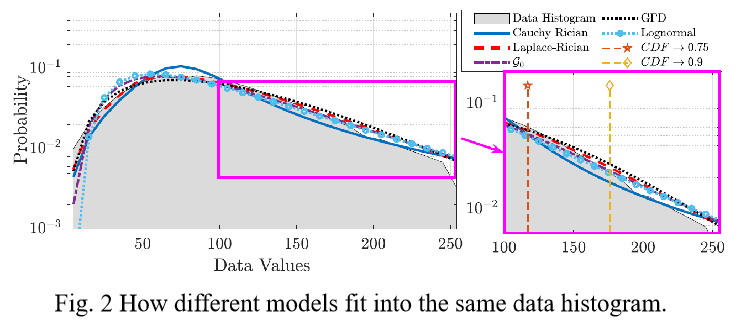Statistical Modelling for SAR Images based on Levy α-stable Distribution
Synthetic aperture radar (SAR) is a powerful radar technology commonly adopted for airborne and spaceborne geo-sensing and mapping applications due to its significant advantages in high azimuthal resolution and weather-independent operations. Upon acquisition of SAR images, a histogram representing the distribution of the image pixel values is drafted, and a proper model is required to obtain precise knowledge of the statistical properties of the image data to characterize the surface on which the image is produced.
Several models have been established to approach SAR image data with considerable success, but they are either empirical models with little theoretical support, or theoretical models based on the assumption of an area consisting of infinitesimal reflectors. Such models tend to fail at modelling heavy-tailed scenarios like urban districts with countless buildings and cars that contribute to a heterogeneous collection of strong reflectance.
We thereby aim to develop a unique set of SAR image models based on the Levy α-stable distribution as suggested by the Generalized Central Limit Theorem. Such models enjoy both sufficient theoretical support and availability to strongly heterogeneous data populations, enabling them with arguable competitivity in the analysis of SAR image data and other complex image signals.
 |
 |
Reference
1. Karakus O, Kuruoglu E E, Achim A, et al. Cauchy–Rician Model for Backscattering in Urban SAR Images. IEEE Geoscience and Remote Sensing Letters, 2022, 19: 1-5.